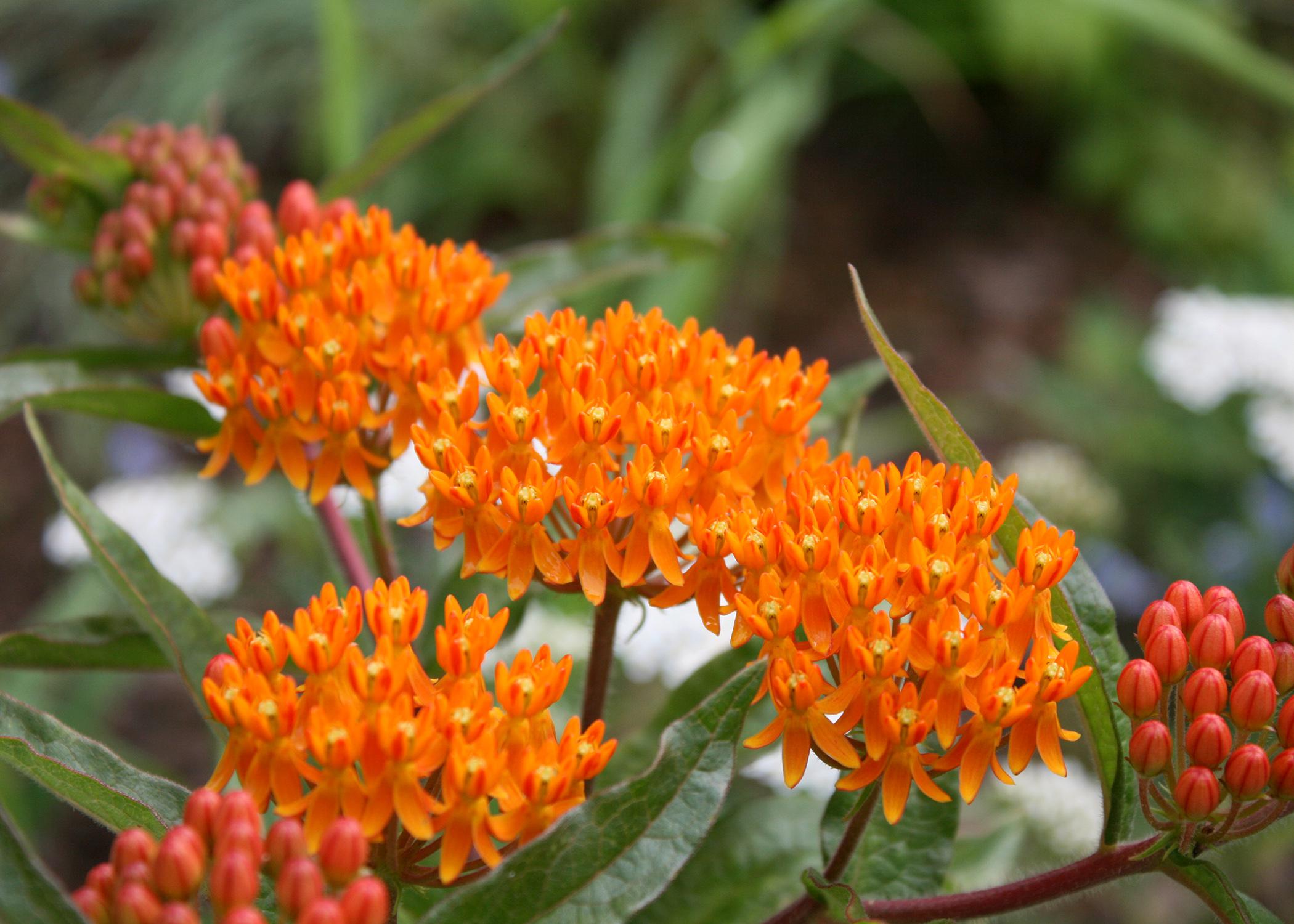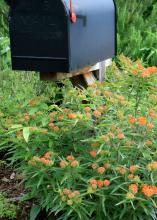Information Possibly Outdated
The information presented on this page was originally released on April 27, 2015. It may not be outdated, but please search our site for more current information. If you plan to quote or reference this information in a publication, please check with the Extension specialist or author before proceeding.
Native butterfly weed is great garden choice
Home gardeners are showing more interest in planting native plants in the landscape. This makes a lot of sense because native plants have a greater tolerance to local environmental conditions. What holds them back is the fact that many have a limited ability to create excitement in the landscape.
One that defies that stereotype is the butterfly weed. This native plant was chosen as a Mississippi Medallion winner in 2012, an award given to plants selected for their superior and outstanding garden and landscape performance.
At the recently concluded pack trials in California, growers showed off plants that will be coming to garden centers in 2016. There were a couple of interesting butterfly weeds on display that featured dark purple and variegated foliage. I can hardly wait to plant these exciting new color selections next year.
Butterfly weed, also commonly known as milkweed, is low maintenance, attracts a lot of butterflies (especially Monarchs) and is deer resistant. This plant is a common sight along highways during the late summer. The deep-orange flowers standing out on cut embankments are a testament to the plant’s low-maintenance requirements.
Butterfly weed grows up to 3 feet tall and 2 feet wide and has an upright, clumping growth habit. The clusters of tubular flowers come in various shades of orange, but some flowers are shaded towards yellow or red.
In late summer, butterfly weed lives up to its name and is a butterfly magnet. It is the primary food source for Monarch caterpillars.
If you want a butterfly weed that blooms all summer long, then consider the tropical milkweed carried at many garden centers. I wouldn’t rely entirely on this species, as there is a bit of concern about tropical milkweed being a host to a protozoan parasite that can harm butterflies.
Remove seed pods to reduce reseeding. If you dry the seed pods just before they open, they will provide you with good material for dried arrangements to bring the fall season inside.
In the northern part of Mississippi, tropical milkweed is an annual killed back by low winter temperatures, but in the coastal counties, overwintering can happen. You may just decide to transplant a couple of these fast-growing plants in your garden each spring to add to the forage available for caterpillars.
Butterfly weed can grow anywhere in Mississippi as long as there is good drainage, because this plant does not like to have wet feet. The closely related swamp milkweed is a good choice for wet areas. Swamp milkweed has flowers that are red to pink to white.
I grew swamp milkweed several years ago and was amazed by the incredible numbers of Monarch caterpillars it attracted. There were literally hundreds of those yellow, black and white striped caterpillars munching away. Seemingly overnight, they were gone only to be replaced by hundreds of chrysalises. They were on the milkweed plants, the holly bushes and the siding of the house. I even found them on my lawnmower.
While I observed the caterpillars and this prodigious number of chrysalises, I was disappointed by not being observant enough. I didn’t see a single Monarch emerge.
Plant some butterfly weed this spring in your garden, and maybe you can do a better job than I did and watch Monarch butterflies emerge from your foliage.









